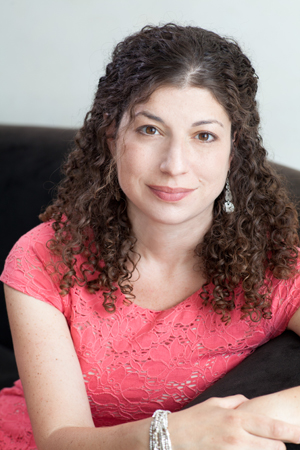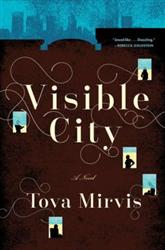by Adam Rovner
Best-selling author Tova Mirvis achieved mainstream success with her novels about women in insular Orthodox communities. After a ten year hiatus, Mirvis is back with her third novel, Visible City (Houghton Mifflin Harcourt), an intensely personal tale of love, loss, and transformation.
 Adam Rovner: Some reviewers of Visible City found the novel to be pessimistic because it depicts failed relationships. Can you discuss your own sense of whether Visible City was optimistic or pessimistic?
Adam Rovner: Some reviewers of Visible City found the novel to be pessimistic because it depicts failed relationships. Can you discuss your own sense of whether Visible City was optimistic or pessimistic?
Tova Mirvis: I wanted to write about real life and I don’t think we divide real life into optimistic and pessimistic. Life has its ups and downs. The hard parts and good parts are all intertwined. I felt that the book was about the possibility of change. At the beginning of the book, a lot of the characters are in a state of paralysis, but what I think is amazing about life are those openings — those windows — where we can and do make a change.
AR: Speaking of windows, a central plotline in Visible City concerns the search for a lost masterpiece of stained glass by American artist John LaFarge (1835−1910). Stained glass seems to me to be an especially Christian art form. I always associate stained glass windows with churches, even though synagogues have them as well. For a writer who is so steeped in Jewish tradition, why did the motif of stained glass attract you?
TM: I have those same associations! Stained glass was probably one of my least favorite areas of art, ironically. I got interested in stained glass because of my ex-husband. That was how I learned about John LaFarge. There are stained glass windows that LaFarge made near Boston that I went to see. They are huge and stunning. You can look at those windows as a whole, but you can also look at each individual piece of glass and get a sense of how they were constructed to be a part of this massive work. It made me think about novel writing and I said: “That’s what I’m trying to do, to put all my little pieces together.” And so I developed this love for stained glass.
AR: Jeremy is one of two characters in Visible City who searches for the lost LaFarge window. He’s intriguing because he has left the Orthodox Jewish world. At one point in the novel there’s a lament from Jeremy’s perspective about the loss of Shabbat observance. Why was Jeremy’s abandonment of tradition so crucial to the novel?
TM: His story felt important to me because I was interested in what happens when we make change. I felt like the idea that we can change our lives doesn’t tell the whole story, because of course we bring the past with us. I was writing a book about physical objects that were left behind in the city — stained glass windows that are walled up, or [abandoned] subway stations — and then I thought about the parts of our own past that are sort of emotional ghost stations. Even when you make a change, even when you want that change, there is still regret and loss. I felt like Shabbat was an example where you view time differently, and having some experience with lawyers myself, every second can be taken up by work. But Shabbat is kept separate. By leaving that behind, Jeremy no longer had the feeling that at least for those twenty-five hours, his time was his own.
AR: Would it be fair to say that Visible City may be even more personal a novel than either of your previous books?
TM: Visible City was hewn out of my own need for change, my own emotional trajectory. It took ten years [to write], which I can’t really believe. […] It took a lot of time and a lot of soul-searching to figure out how to finish this book. Ultimately, I feel like I had to be willing to unleash the characters and write a book where people make changes. I think I had to come to learn that people do make changes, do take action. I had to be willing to let that happen, both in my own life and for the characters.
 AR: Can you let us in on what you’re working on next?
AR: Can you let us in on what you’re working on next?
TM: I’m working on a memoir, which is new for me. I wrote an essay that was in The New York Times about my divorce that will be the first chapter. Writing [that essay] was not the emotional part — putting it out there was. But I ended up getting a few hundred emails from strangers and it was so nice to have people share their own stories of change, of divorce, and of religion. There was this feeling that I’m telling a story that other people experience also. So now I’m writing a book — the tentative title is The Book of Separation, which is a translation from the [biblical] Hebrew term for a divorce document: sefer kritut. I’m writing about how you make changes after having lived in a certain world, what you leave behind, and what it means to recreate you own sense of community or belonging that’s different from what you’re accustomed to. I have to turn it in December of 2015. That scares me because I’m used to the ten-year plan, so I’m hard at work.
Adam Rovner is an associate professor of English and Jewish Literature at the University of Denver. He is the author of In the Shadow of Zion: Promised Lands before Israel (NYU Press), a narrative history of efforts to establish Jewish homelands across the globe.
Related Content:



